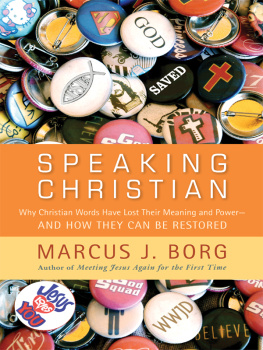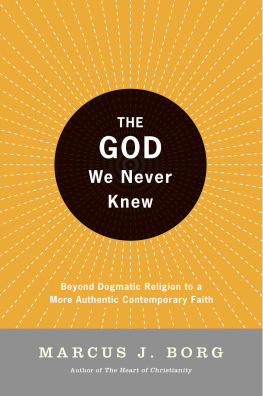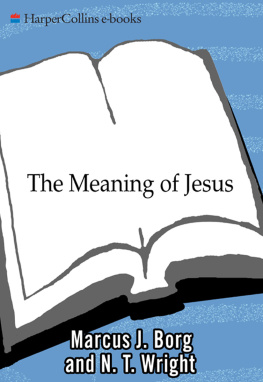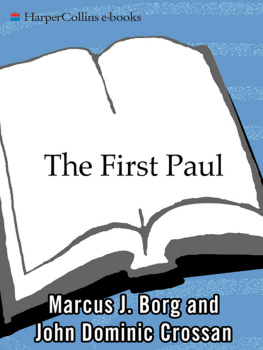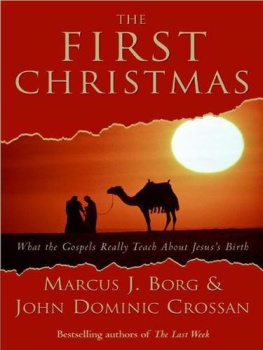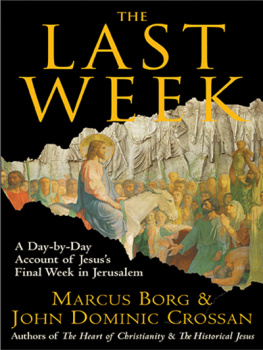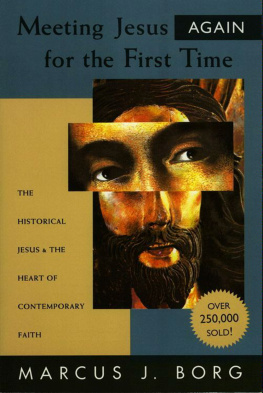Marcus Borg - Jesus and Buddha: The Parallel Sayings
Here you can read online Marcus Borg - Jesus and Buddha: The Parallel Sayings full text of the book (entire story) in english for free. Download pdf and epub, get meaning, cover and reviews about this ebook. year: 2020, publisher: Ulysses Press, genre: Religion. Description of the work, (preface) as well as reviews are available. Best literature library LitArk.com created for fans of good reading and offers a wide selection of genres:
Romance novel
Science fiction
Adventure
Detective
Science
History
Home and family
Prose
Art
Politics
Computer
Non-fiction
Religion
Business
Children
Humor
Choose a favorite category and find really read worthwhile books. Enjoy immersion in the world of imagination, feel the emotions of the characters or learn something new for yourself, make an fascinating discovery.

- Book:Jesus and Buddha: The Parallel Sayings
- Author:
- Publisher:Ulysses Press
- Genre:
- Year:2020
- Rating:3 / 5
- Favourites:Add to favourites
- Your mark:
- 60
- 1
- 2
- 3
- 4
- 5
Jesus and Buddha: The Parallel Sayings: summary, description and annotation
We offer to read an annotation, description, summary or preface (depends on what the author of the book "Jesus and Buddha: The Parallel Sayings" wrote himself). If you haven't found the necessary information about the book — write in the comments, we will try to find it.
Jesus and Buddha: The Parallel Sayings — read online for free the complete book (whole text) full work
Below is the text of the book, divided by pages. System saving the place of the last page read, allows you to conveniently read the book "Jesus and Buddha: The Parallel Sayings" online for free, without having to search again every time where you left off. Put a bookmark, and you can go to the page where you finished reading at any time.
Font size:
Interval:
Bookmark:
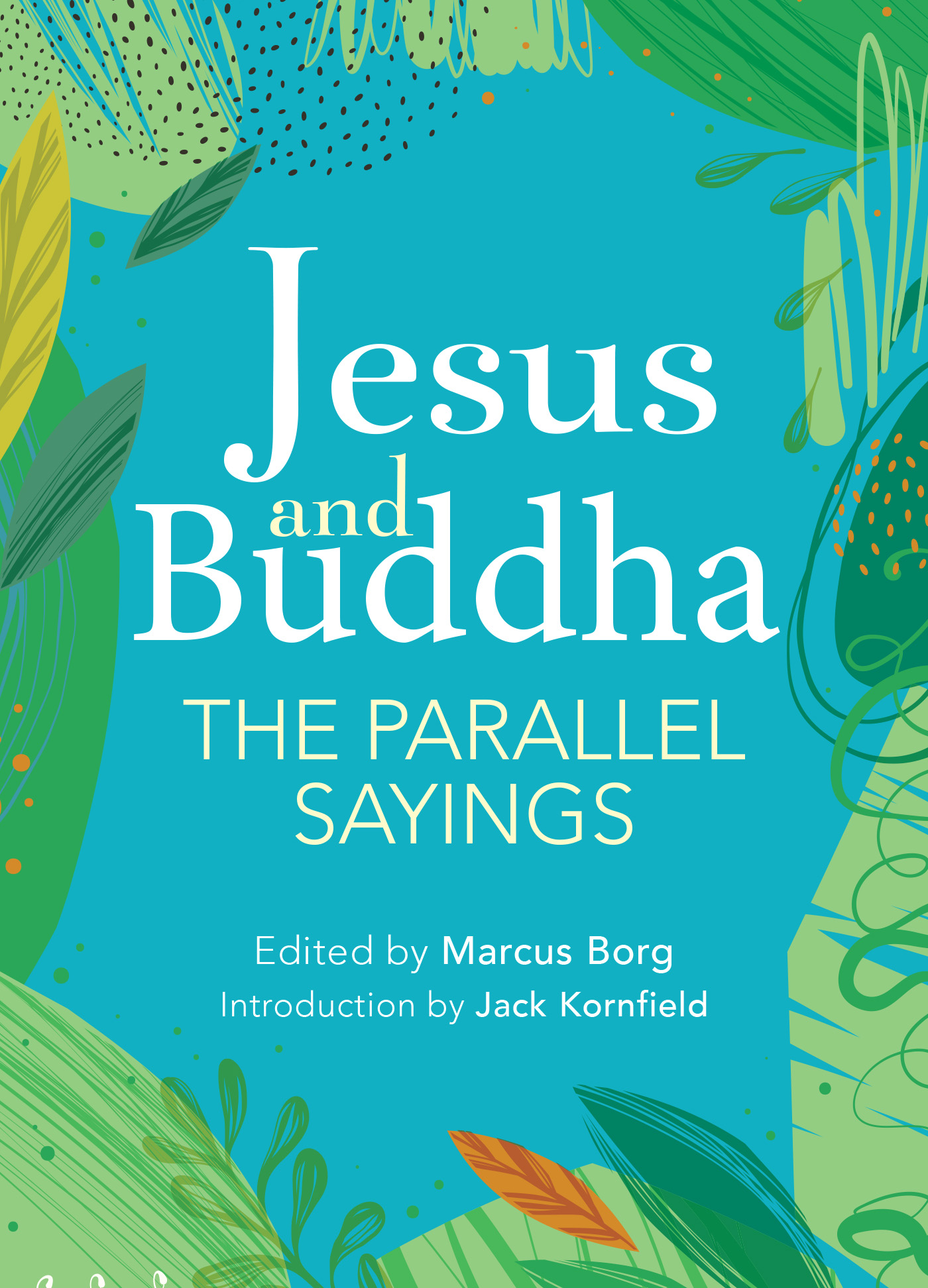

This compilation reveals a remarkable synchronicity in early teaching from East to West.
New Age Journal
Beautifully laid out a popular book designed to foster reflection.
Religious Studies Review
Enlightening and beautifully printed.
The Living Church
An eloquent overview of the similarities between Christianity and Buddhism.
Detroit Free Press
Preface and introductions copyright 1997, 1999, 2020 Ulysses Press and its licensors. All rights reserved. Any unauthorized duplication in whole or in part or dissemination of this edition by any means (including but not limited to photocopying, electronic devices, digital versions, and the internet) will be prosecuted to the fullest extent of the law.
First Ulysses Press Edition 1997
Published in the U.S. by:
Ulysses Press
P.O. Box 3440
Berkeley, CA 94703
www.ulyssespress.com
The publishers have generously given permission to use quotations from the works cited on .
ISBN: 978-1-64604-039-1
ISBN-13: 978-1-6460-4118-3 (eBook)
Library of Congress Catalog Number: 2020931867
Research and editorial associates: Karen Andrews, Kenneth Leong
Proofreader: Miriam Jones
The Christian Scripture quotations contained herein are from the New Revised Standard Version Bible, copyright 1989 by the Division of Christian Education of the National Council of the Churches of Christ in the U.S.A., and are used by permission. All rights reserved.
All quotes from the Anguttara Nikaya, the Itivuttaka, the Samyutta Nikaya, the Udana, the Vinaya, and the quote from the Khuddakapatha appearing on are copyright the Pali Text Society, and are used by their permission. Please see the bibliography for complete bibliographic information.
The quote from the Dhammapada appearing on is from The Dhammapada: With Introductory Essays, Pali Text, English Translation and Notes, translated by S. Radhakrishnan. Copyright 1966 by Oxford University Press. Used by permission of the publisher.
All other quotes from the Dhammapada are from The Dhammapada: The Sayings of Buddha. by Thomas Cleary. Copyright 1994 by Thomas Cleary. Used by permission of Bantam Books, a division of Bantam Doubleday Dell Publishing Group, Inc.
Quotes from the Digha Nikaya are copyright Maurice Walshe 1987, 1995. Reprinted from The Long Discourses of the Buddha: A Translation of the Digha Nikaya. With permission of Wisdom Publications, 361 Newbury Street, Boston, Massachusetts, USA.
Quotes from the Jatakamala are from Once the Buddha Was a Monkey: Arya Suras Jatakamala, translated by Peter Khoroche. Copyright 1989 by The University of Chicago. Reprinted with permission of the publisher.
Quotes from the Lalitavistara Sutra are from The Lalitavistara Sutra: The Voice of the Buddha: The Beauty of Compassion, translated by Gwendolyn Bays. Copyright 1983 by Dharma Publishing. Reprinted with permission of the publisher.
Quotes from the Majjhima Nikaya are copyright Bhikku Bodhi 1995. Reprinted from The Middle Length Discourses of the Buddha: A New Translation of the Majjhima Nikaya. With permission of Wisdom Publications, 361 Newbury Street, Boston, Massachusetts, USA.
Quotes from the Sadharmapundarika Sutra are from Scripture of the Lotus Blossom of the Fine Dharma, translated by Leon Hurvitz. Copyright 1976 by Columbia University Press. Reprinted with permission of the publisher.
Quotes from the Sutta-Nipata are from The Sutta-Nipata, translated by H. Saddhatissa. Copyright 1985 by Curzon Press. Reprinted with permission of the publisher.
Quotes from the Udanavarga are from The Dhammapada with the Udanavarga, edited by Raghavan Iyer. Copyright 1986 The Pythagorean Sangha. Reprinted with permission of the publisher.
Quotes from the Vimalakirti Nirdesha Sutra are from The Holy Teaching of Vimalakirti: A Mahayana Scripture, translated by Peter Khoroche. Copyright 1976 by The Pennsylvania State University. Reprinted with permission of the publisher.
by Jack Kornfield

You hold in your hand a remarkable and beautiful book. In our modern times we have had translated for us the teachings of all the worlds major religions, the wisdom of the ages. Jesus and Buddha, two of the greatest holy beings ever to walk the earth, inspiration to billions, are now meeting in an encounter of the spirit in the West. When we listen deeply to their words, we find that in many ways, they speak with one heart.
The brotherhood of these sacred physicians, healers of the sorrows of humanity, was portrayed to me in a faraway land long ago. While studying Buddhism I had the privilege of visiting a monastery in the Mekong Delta of Vietnam. It was built on an island by a master of peace known as the Coconut Monk and filled with monks during the war years. Passing along the waterways in the midst of active fighting, our boat arrived at the dock where Buddhist monks greeted and escorted us around. They explained to us the teaching of nonviolence and forgiveness on which they had staked their lives. We ate together.
Then they took us to the end of the island where, on top of a hill, there was an enormous fifty-foot-tall statue of a standing Buddha. Next to Buddha stood an equally tall statue of Jesus. They had their arms around each others shoulders, smiling. While helicopter gunships flew by overhead and the war raged around us, Buddha and Jesus stood there like brothers, expressing compassion and healing for all who would follow their way.
The bond of love depicted by these statues rests on the universal wisdom that they share. They both taught the Laws of the heart, the eternal fragrance of virtue, the path of generosity, the power of faith, contentment and compassion. They both inspired their disciples to turn from the materialism of the world and live a life of the spirit, to come to know the timeless truth, to awaken to the undying. There is one truth, not many, say the Buddhist texts. It is open to all. See and know this for yourself, said the Buddha. Jesus pointed in the same openhanded fashion when he said, The Kingdom of God is within you.
That this is universal wisdom there can be no doubt. When holy men and womenrevered elders, Christian monastics and Buddhist mastershave met in recent years, they know one another like family, as living the same life of purity and holy renunciation. The meeting of Thomas Merton and the Dalai Lama was said to be filled with profound connection and delicious laughter. Then there is the story of the old Zen master who met a famous Christian abbot in an airport in the United States. It was a chance encounter and there was no translator present, so they sat together for an hour, holding hands and smiling broadly.
What matters is not the scholarly or theological differences between Buddhism and Christianity, but that both offer us direct teachings, instructions, practices, ways to conduct our lives and free our hearts. Jesus and Buddha say to us, even today, Follow me. Do we dare?
If we could read, listen to, take to heart and enact even one verse from these teachings, it would have the power to illuminate our hearts, free us from confusion and transform our lives.
Font size:
Interval:
Bookmark:
Similar books «Jesus and Buddha: The Parallel Sayings»
Look at similar books to Jesus and Buddha: The Parallel Sayings. We have selected literature similar in name and meaning in the hope of providing readers with more options to find new, interesting, not yet read works.
Discussion, reviews of the book Jesus and Buddha: The Parallel Sayings and just readers' own opinions. Leave your comments, write what you think about the work, its meaning or the main characters. Specify what exactly you liked and what you didn't like, and why you think so.

